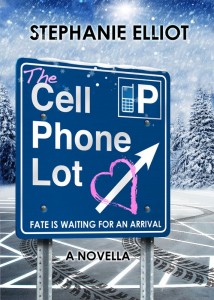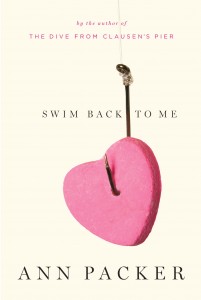 Blow up the balloons! Cue the streamers! Break out that bubbly- stat! MaNiC MoMMy (a.k.a. Stephanie Elliot) is in 'da house sharing the news about her short story, The Cell Phone Lot (available today!). It's a fabulous, fast-paced and funny story about chance encounters. (We love the premise!) And not only is she here, but she's taking over. We've given her the reins (which y'all know we don't do that often) and told her to run this show.
So without further adieu, heeeere's Stephanie!
Blow up the balloons! Cue the streamers! Break out that bubbly- stat! MaNiC MoMMy (a.k.a. Stephanie Elliot) is in 'da house sharing the news about her short story, The Cell Phone Lot (available today!). It's a fabulous, fast-paced and funny story about chance encounters. (We love the premise!) And not only is she here, but she's taking over. We've given her the reins (which y'all know we don't do that often) and told her to run this show.
So without further adieu, heeeere's Stephanie!
Just one more thing--because you know we're control freaks--she's giving away 5 copies of The Cell Phone Lot! Details below... Okay, we're really leaving now. Promise!
Okay, really, we mean it this time, heeeere's Stephanie!
The Cell Phone Lot is a short story I wrote between Christmas and New Year’s when my husband and I were flying from Arizona to Ohio to go to my grandmother’s funeral. Being at the airport just sparks imagination, and while there, I recalled a time I was waiting in a cell phone lot, and the idea snuck into my mind. The story came pouring out then, and I wrote these 65 pages really fast.
This little story is all about chance encounters, fate and taking risks in your life. And I truly do believe that every person we come in contact with has been placed in our “life timeline” for a reason, that nothing is random, and everything has a specific purpose. Whether it is to cheer someone up in line while waiting at the post office, to offer a suggestion to a new mother at the park, or to meet your soul mate, I think every contact we make with another human being is purposeful and with reason. This is what I believe fate to be. When I met my husband, I was 20 and he was 21. We were both attending Northern Illinois University. I was heading out with my roommates to go to the bar we frequented. It was a Friday night, early, like 6 p.m. and we usually didn’t go out that early. We wanted to get there to grab a table, but the bar was packed because of some fraternity event.
So we were waiting around until a table opened up, drinking our dollar drafts (yes, back then they only cost one dollar!). A table opened up and two football players went for the same one we were eyeing. I didn’t care for football at all, wasn’t impressed that the guys were big football jocks, but I wanted to get a table, and one of the guys was kind of cute. We argued with them a bit that we got to the table first, and then the five of us agreed to share it.
The guy at the table bought me a beer, shared his pizza, kissed me at another bar later that night, and became my husband and the father of my three kids. We’ll have been married 19 freaking years in May. That’s still crazy to think about because he and I both still feel like we are those college kids back in 1990.
The fateful thing about our chance encounter on February 2, 1990 (Wow, I just realized I met him on the day The Cell Phone Lot is coming out! How’s THAT for fate – 22 years to the day!)… the neatest thing about our story is that there are so many chances for us to have NOT met that night, and also so many chances for us to have met previously. But it was THAT night that was supposed to be THE night for us.
We discovered that when I was a freshman, we had a math class together. We probably had been to the same parties. I knew some of his closest friends – even typed papers for one of his best friends. Had I met him any other time, there would have been no way we’d ever been together forever. Yeah, we might have hooked up earlier during college – to have our relationship outlast the four years of college? No way. We needed that time to grow and become the people we were when we met that night.
And I could have totally missed him the night we met. Let’s say my roommates weren’t ready to leave when we left for the bar, or we didn’t see the table become available, or one of our fake IDs didn’t work that night? There were so many components that led to us meeting that night, that it was completely meant to be.
This is why I love stories about fate, and love, and risk-taking and chance encounters.
With The Cell Phone Lot, I wanted to create two people who might not otherwise ever meet and have them want to be together so badly but to have some major obstacles get in the way.
Grant is at the cell phone lot to pick up a woman he’s going to meet for the first time that he ‘met’ through an online dating service when he meets Bridge in the cell phone lot. She’s also waiting to pick up someone at the airport. They are attracted to each other instantly, and their attraction is palpable.
Their relationship unfolds in the airport as the flights they’re waiting for are delayed by bad weather. It’s anybody’s guess as to what happens – if this chance encounter has fate arriving for them, or if they’ll have separate departures … never to see one another again.
I’d love to give away five copies here, and for those who don’t win it, it’s only 99 cents on Amazon.
Think about where you are now and who you’re with – what led you to this place in your life? Was it a chance encounter? Fate? Was the timing absolutely perfect that any little glitch in the planning and you would have never met? I’d love to hear your story in the comment section for a chance to win one of the five ebooks we’re giving away here!
And thanks Liz and Lisa for hosting me on Chick Lit is Not Dead!
To find out more about Stephanie Elliot, visit her website.
Thanks, Stephanie! xoxo,
L&L
(Fine print: We'll randomly select the winners of The Cell Phone Lot on Monday, February 6 after 6pm PST.)



